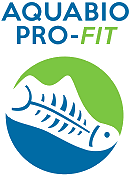Undoubtedly, an in vivo wound model is the best possible model system, offering multiple benefits. It allows the study of interactions between multiple cell populations and the whole-body system during repair. In addition, the animal model also allows selective depletion of specific genes to determine their effect on wound healing, while enables the generation of multiple wounds within one animal. However, ethical issues, cost, and the fact that these models often show high degree of variability, must be taken into consideration. Therefore, in vitro models also exist; rapid, low cost and reproducible systems that produce important preliminary results regarding one or few components of the skin at a time. Most in vitro models are performed to answer basic questions regarding cell signaling in response to cell stress or injury.
Scratch assays use dermal fibroblasts, keratinocytes, or endothelial cells, creating a monolayer cell culture. A 'wound' is generated in the cell layer by scraping the dish surface with either rubber devices or the tip of a pipette. The rate of wound closure, namely how fast the cells divide and migrate into the 'wound' area, is determined by imaging. An alternative migration assay is the Boyden chamber/transwell assay. In this model, cells such as endothelial or keratinocytes are seeded on top of an insert, optionally coated with ECM components, with a porous membrane (upper compartment). Cell migration is quantified via measuring the number of cells that have passed through the pores during a defined time interval into the lower compartment.
In contrast to these 2D models, 3D models represent better the 3D macroscopic fibrotic tissue structure of a scar. Thus, 3D models have been developed for studying the replacement and remodeling of ECM during wound healing. One such model is a 3D collagen construct with embedded fibroblasts, providing information about cell migration as well as cell-induced matrix reorganization. In this model, the compressed collagen matrix containing cells is placed within an acellular, lower density outer matrix. In another model, the fibroblast-populated collagen lattice (FPCL), fibroblasts are seeded in a collagen solution (usually type I acquired from rat tail), which is solidified to gel, forming a cell-encapsulated three-dimensional lattice. Being unsuccessful as a skin graft, FPCL became valuable for investigating cell-connective tissue interactions within a three-dimensional matrix. This model is based on the principle that cell-generated forces reduce the water mass (reduction in FPCL volume) between collagen fibers, resulting in compaction (collagen matrix compaction). In addition, organotypic skin-like three-dimensional cultures can also be used for studying interactions between different cell types. In this model, typically keratinocytes are grown on top of a collagen matrix that contain fibroblasts, creating epidermal equivalents. Moreover, human epidermal equivalents can be also developed using either human adult primary keratinocytes, isolated from surplus healthy skin or patient skin, or immortalized keratinocyte cell lines, such as N/TERT-1 and N/TERT-2G.
For histopathological analysis, skin biopsy is performed, followed by embedding, sectioning and staining in order to observe the healing progress in the course of treatment. Haematoxylin and eosin (H&E), the most widely used stain, as well as other non-H&E stains, trichromes (stain collagen fibers and muscle) and immunohistochemical markers allow quantification of white blood cells, blood vessel, fibroblasts, and collagen (more 2.5.3).
The progression of the wound healing can be also monitored through biochemical assays such as hydroxyproline, myeloperoxidase assay (MPO), N-acetylglucosaminidase (NAG) and oxidative stress profile. As previously mentioned, during wound healing cell-to-cell communication is mediated via soluble or membrane-bound factors (cytokines and growth factors), which provide the necessary signals to stimulate endogenous repair mechanisms. These signaling molecules can be quantified by different techniques such as immunohistochemistry and enzyme-linked immunosorbent assay (ELISA).






